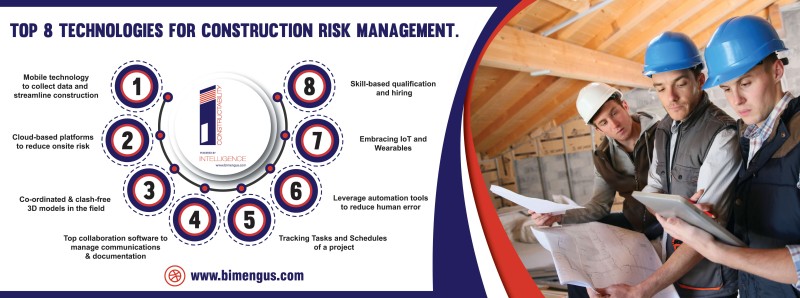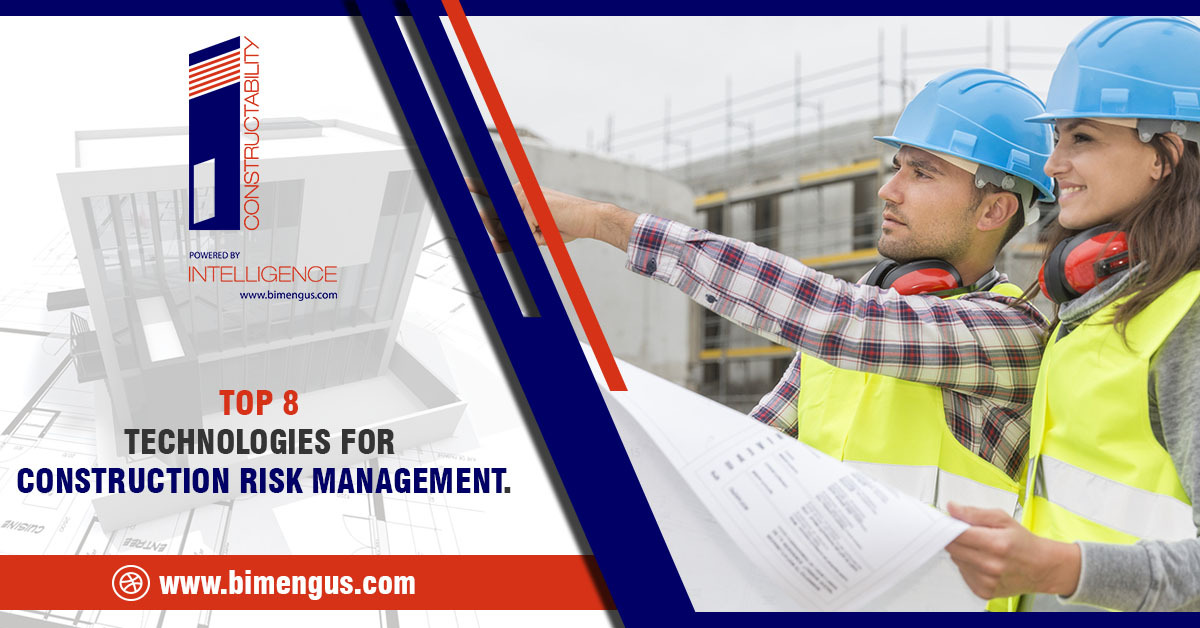Any business comes with its fair share of risks, but controlling risks in construction is at a different level. The reason being, there’s a myriad of variables at play for an AEC firm that requires perpetual management. Failure to evaluate, control, and mitigate risks creates serious complications.
But, a comprehensive risk management strategy integrated with modern technology provides AEC stakeholders the opportunity to achieve positive outcomes and high-quality deliverables. iFieldSmart Technologies & BIM Engineering US L.L.C. delivers a gamut of tools & services for Construction Risk Management.
 What are the types of risks that need to be managed in the construction industry?
What are the types of risks that need to be managed in the construction industry?
Design
Improper management of design changes can lead to extensive rework or time overruns.
Labor
Labor-related issues are a big challenge in the AEC industry. The shortage of skilled workers can lead to quality and productivity issues.
Logistical
Delivering projects on-time and on-budget, but there are scheduling, procurement, and communication issues. These can hamper a project’s efficiency and effectiveness on site.
Financial
Money is one of the biggest factors in construction. Various elements that include material costs, market fluctuations, and cash flows play a significant role between profits and losses. Project stakeholders need to be vigilant about monitoring risks on a perpetual basis.
Environmental
When it comes to threats, various environmental factors can compromise onsite construction. These conditions need to be analyzed and monitored for safety issues.
Technology is consistent, and that’s one way to manage a myriad of risks in construction.
The ease of use and costs are two factors that influence a project stakeholder’s decision on adopting the technology. Yet, when it comes to Construction Risk Management on worksites and proposals, stakeholders need to invest some money, to earn money. The benefits of technology outweigh the cons, but you need to make sure it’s the right kind of technology you’re adopting for risk management. From a report by Data and Data, contractors prefer the ability to collect and analyze safety and risk data digitally, yet one-third of the contractors rely on conventional methods.
If you’re amongst the one-third still relying on manual methods, it’s time for technology migration to streamline Construction Risk Management, and enhance operations.
Here’s a look at the top 8 technologies that can help you get there.

#1. Mobile technology to collect data and streamline construction
Mobile technology has the potential to streamline communication and collect data. This can significantly reduce risk as data becomes more accessible to various teams & trades. By using mobile technology, teams can access 3D models, drawings, RFI’s, and other construction documents on-the-fly. This helps the project stakeholders update any information or documents on-the-fly. This helps enable better job site accuracy and overall decision making on project sites. As a perk, mobile technology on the job site can help reduce insurance problems. This helps reduce overhead costs. 
#2. Cloud-based platforms to reduce onsite risk
Mobile technology is one thing, but the cloud is another. You can’t go mobile on a project, without being in the cloud. Cloud-based technologies for cloud storage, collaboration, and construction management. Cloud-based automation helps project stakeholders work on-the-fly and in real-time. Here’s a look at the benefits of cloud-based technology, and how it can reduce construction challenges.

Accessibility
Cloud technology is ideal for project teams who have a remote working strategy.
Visibility
The entire team has access to various project deliverables like models, drawings, RFI’s, and other construction documents. Teams can store, access, and share documentation as it occurs.

Security
Models, drawings, and other construction documents are kept secure in a centralized location.
#3. Co-ordinated & clash-free 3D models in the field
BIM has left a significant mark in project design, but getting 3D models to mobile devices creates a whole new set of opportunities for construction companies. With BIM software being available in the field, it becomes easy for teams to leverage information to build better. This rich information can resolve errors on the job, reduce deadlines, and handover projects on budget. Getting BIM software to mobile devices can go a long way in –


Mobile-friendly BIM software, such as iFBIM, iFMeets, iFCloud, and iF360 can help teams build more effectively and efficiently. With the ability to sync 50 clashes/min and 99% availability on iFBIM, and 75% workforce savings on building plans, iFBIM is a contemporary project collaboration software for smart BIM.

#4. Top collaboration software to manage communications & documentation
Underestimating the power of good and transparent communication leads to a complete reduction in construction risks. Investing in good collaboration software like iFMeets allows teams to come together, connect on plans, information, and workflow to reduce risks. With a complete feature-set, these tools allow for enhanced visibility, improved accountability, and high productivity.


#5. Tracking Tasks and Schedules of a project
Getting behind schedule is never ideal for a project, especially when it comes to financial and labor problems. That’s why it is strongly recommended investing in software designed to enable collaboration, and maintaining tasks and project schedules. Not only does it help construction risk management, but it helps teams make informed decisions on how to carry out project activities, and improve accountability.
#6. Leverage automation tools to reduce human error
Manual data entry is time-consuming and tedious. It also leaves project teams open to risk. Automating the building process early on helps to achieve a significant reduction in mistakes that could lead to construction risks. Automation tools from iFieldSmart Technologies help automate operations and support data-driven tasks and activities. It also leads to improved workflow and greater effectiveness, and efficiency.

#7. Embracing IoT and Wearables
We’re sure everyone has heard of IoT but has your AEC firm embraced it? The same goes for wearable technology and sensors. According to Dodge and Data, nearly 75% of the construction workers think that IoT technology, sensors, and wearables help improve occupational risks. Smart wearables are designed to collect data from onsite labor, transmitting it to various teams to ensure the right activities are performed onsite.
#8. Skill-based qualification and hiring
With the current shortage of AEC professionals, it can be a challenge to get the right workforce for a project. But, the right people must be partnered with to address resource shortage or augmentation challenges. Prequalifying or pre-selecting AEC professionals before they are hired is essential before they are brought on site.



In Summary
Getting proactive about Construction Risk Management is crucial. Not adopting technology has the potential to cripple a construction project or company. It’s important why risk management shouldn’t be considered an afterthought, but a core necessity. The right processes and tools do come at an upfront cost, yet long-term savings, efficiency, productivity, performance, and progress are worth it in the long-term.
Visit Us:- www.bimengus.com

